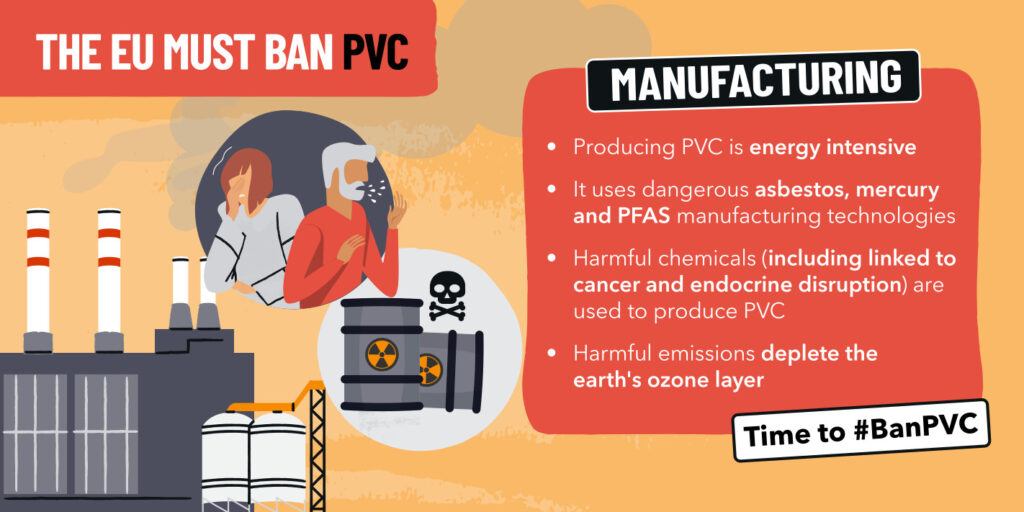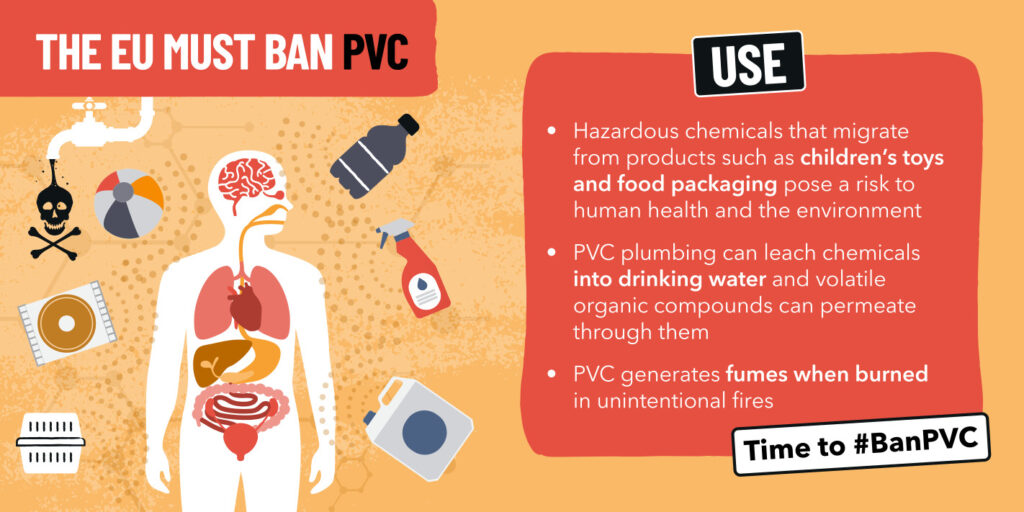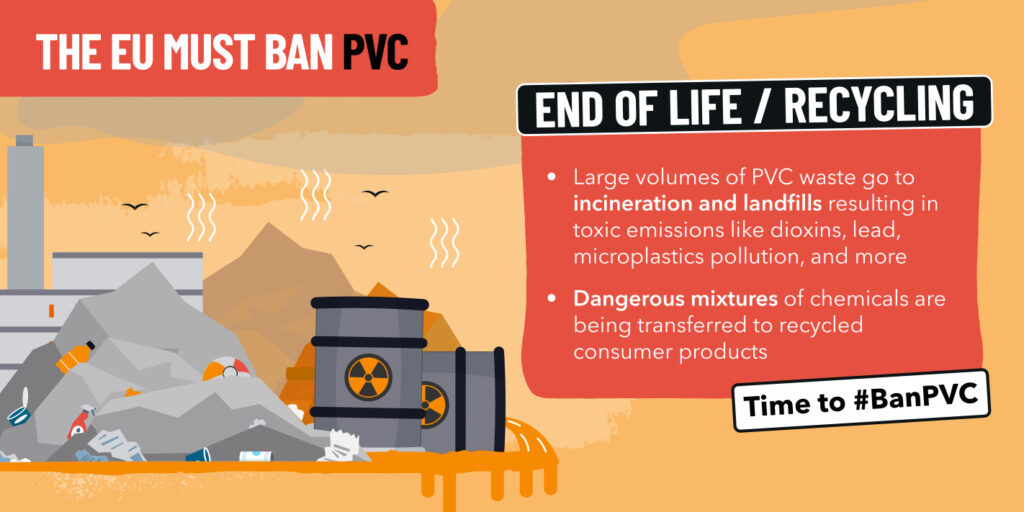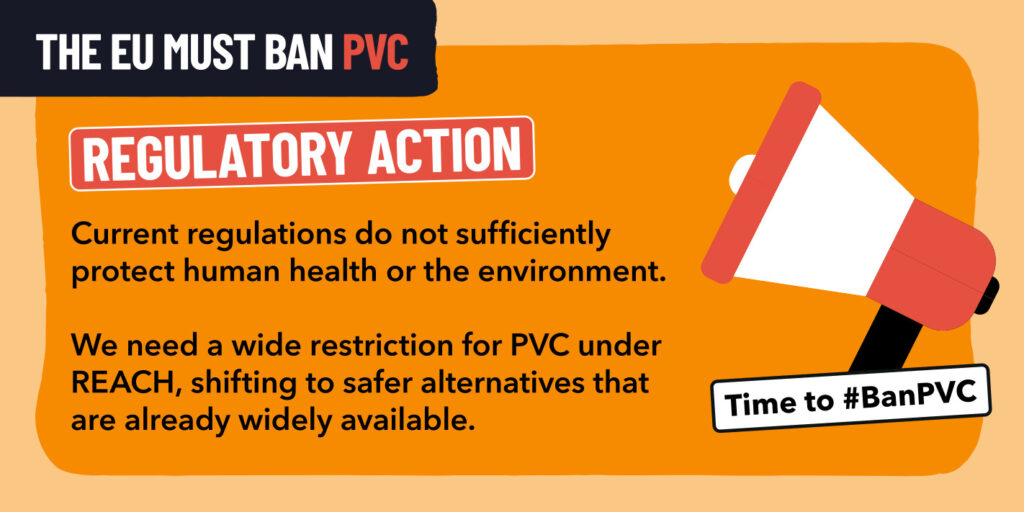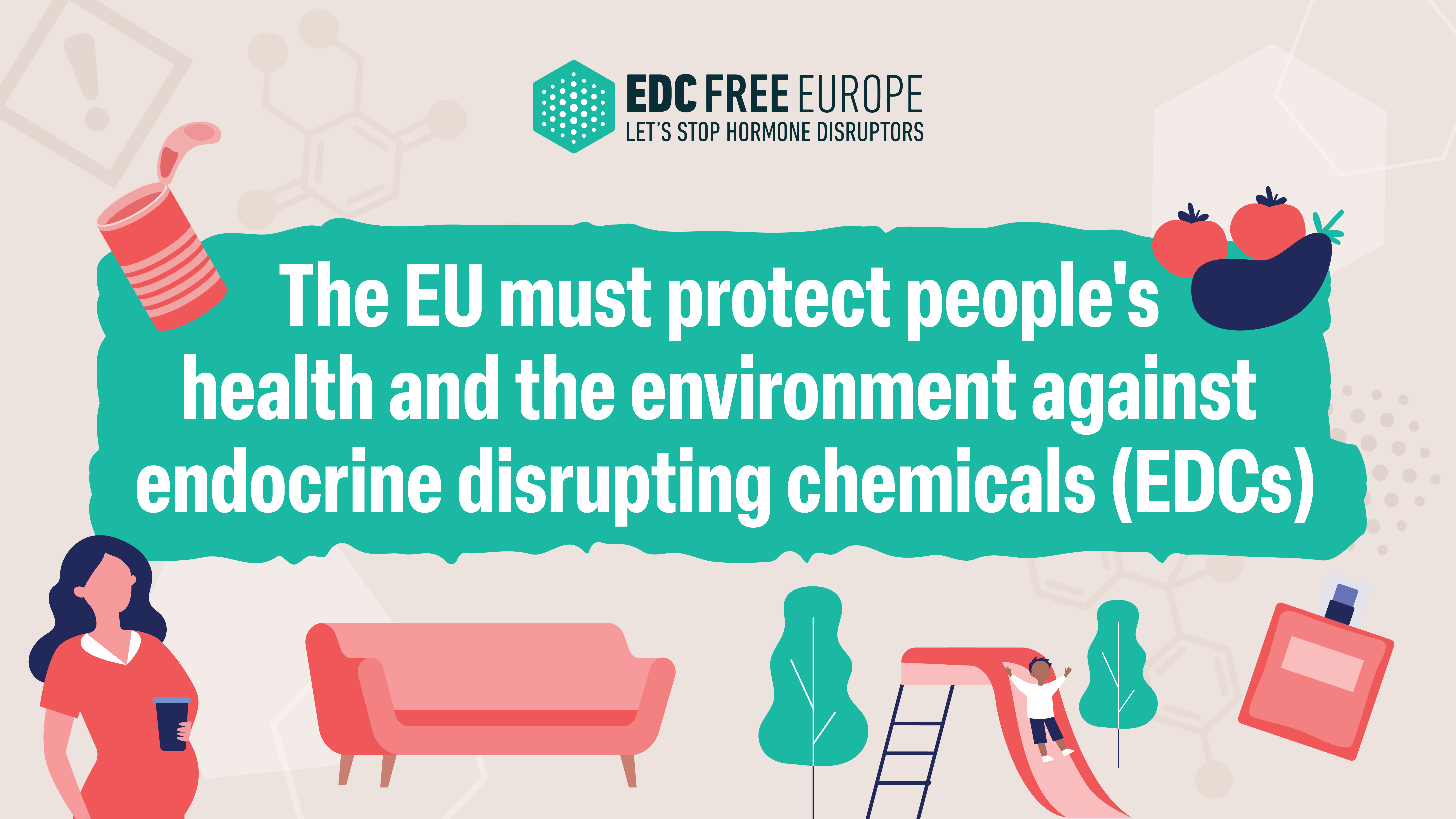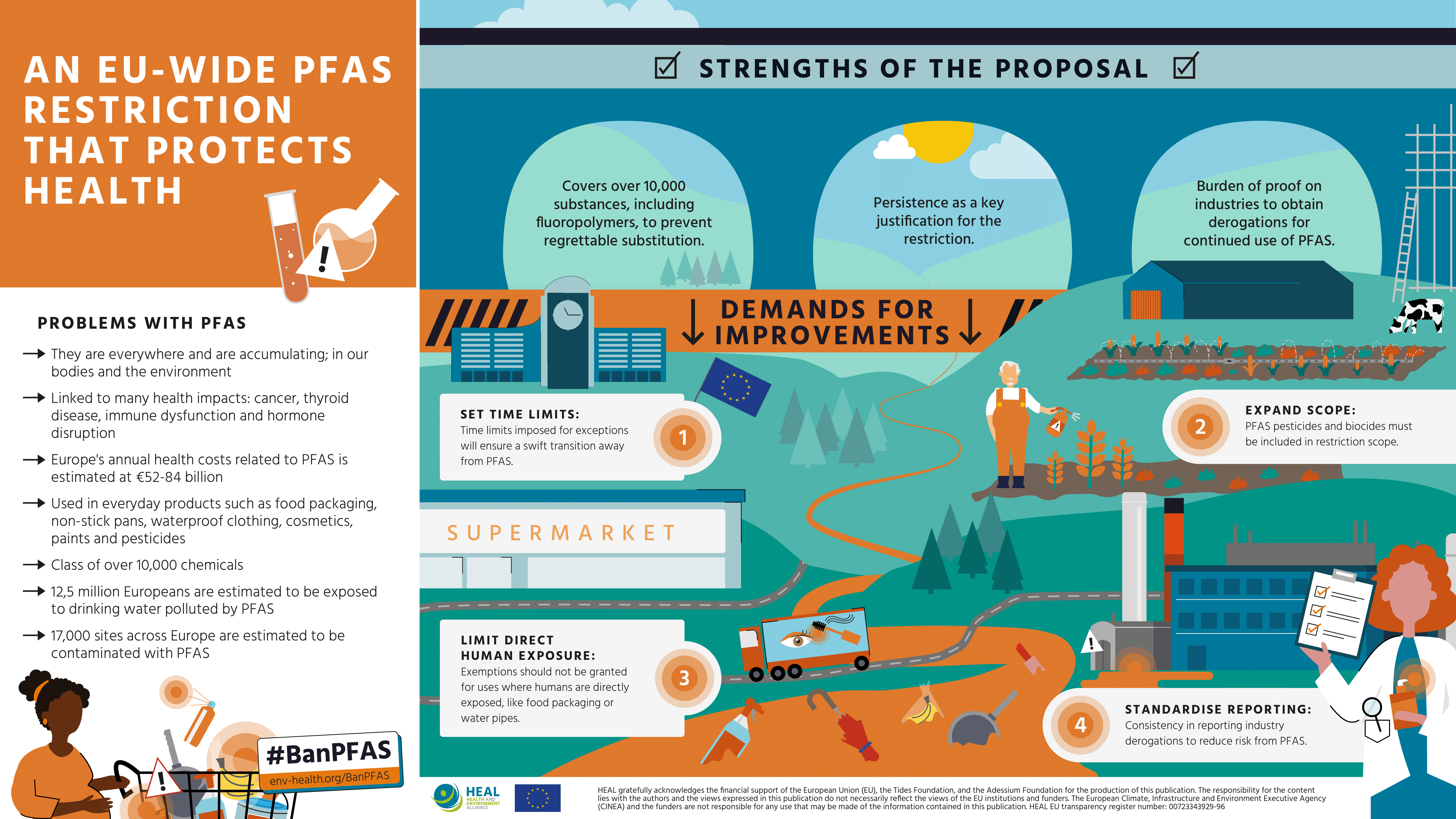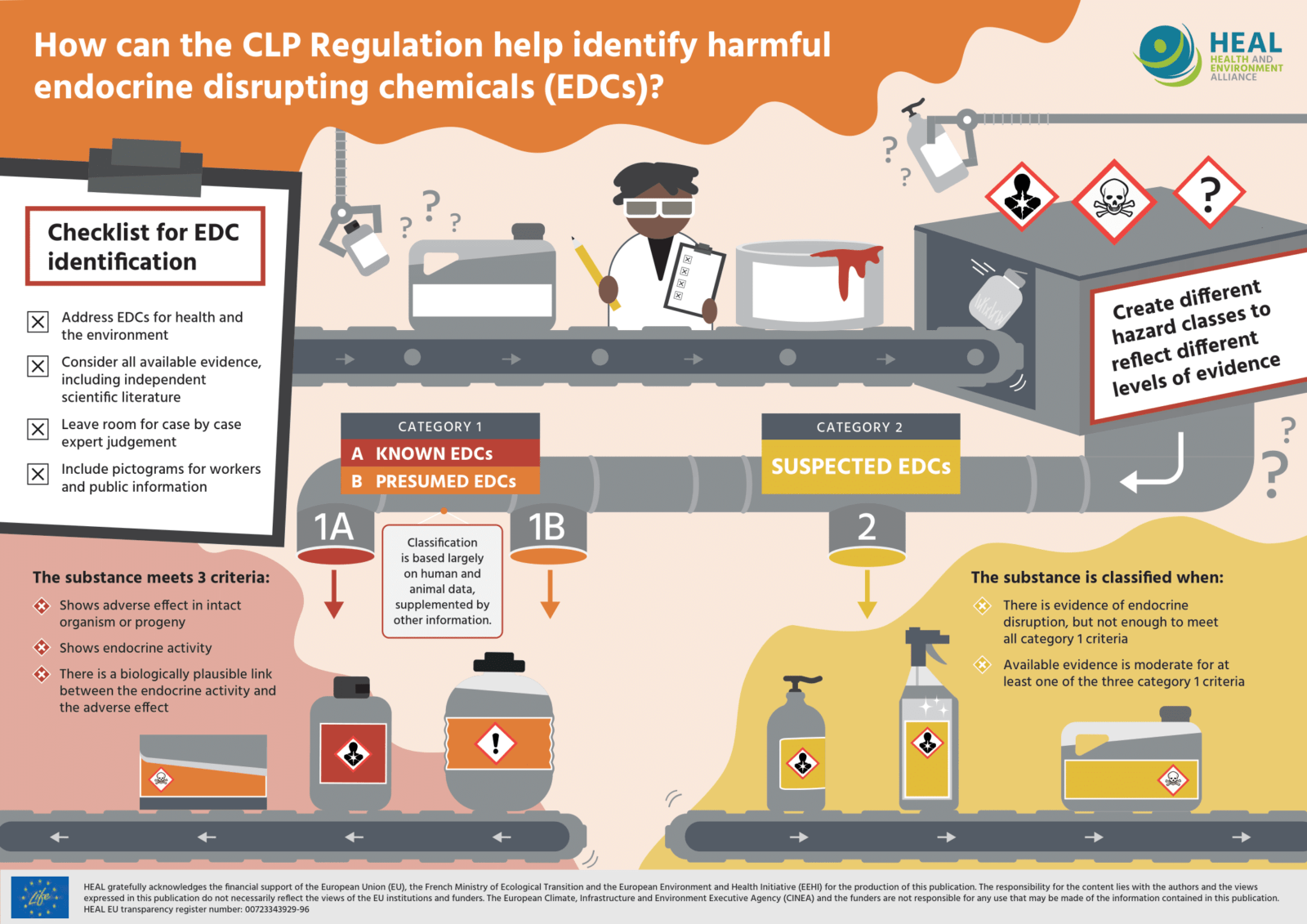The EDC-Free Europe coalition, of which HEAL is a member, has launched a new infographic illustrating the harmful impacts of exposure to known and suspected endocrine disruptors on our health and the environment.
Polyvinyl Chloride (PVC) is a commonly used plastic that exposes people and the environment to toxic, carcinogenic chemicals and contaminants.
PVC can be found in everything from raincoats to construction materials. The amount of chemicals used to manufacture PVC, makes it a truly damaging material throughout its lifecycle. It also contributes to the many other pollution challenges that society is facing in Europe and beyond e.g. PFAS and microplastics.
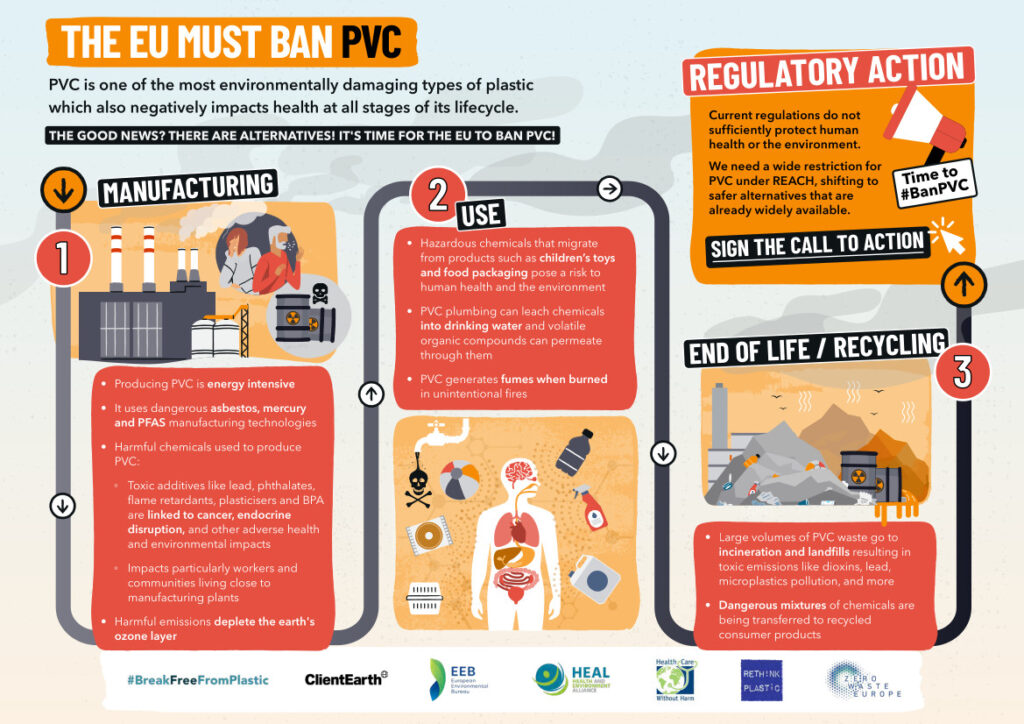 Download the infographic here.
Download the infographic here.
During production, workers and communities are exposed to highly hazardous chemicals. The energy-intensive production relies on harmful pollutants’ such as PFAS, a- group of problematic chemicals that last in the environment and our bodies (we can even pass PFAS on to future generations!), causing adverse effects to our health. Not to mention the emissions that degrade the environment and ozone layer.
When PVC is being used e.g. in food packaging, water pipes or toys, it can leach harmful chemicals. The health hazards associated with the use of and exposure to PVC and its harmful components are daunting:
- Cancer (testicular, liver, and brain cancer)
- Disruption of the endocrine system
- Reproductive impairment
- Impaired child development and birth defects
- Neurotoxicity (damage to the brain or its function)
- Immune system suppression
- Respiratory irritation
Getting rid of PVC is also hard: it is a type of plastic that is very difficult to recycle due to its hazardous additives, as well as existing technical and economical barriers. Burning PVC or landfilling it emits harmful chemicals.
Download the below images by clicking on them.

